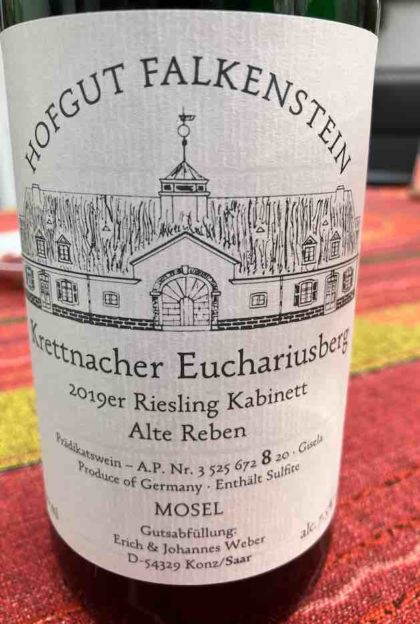
Riesling plays a very important role in German sweet wine. For me, Riesling Auslese wines from the Mosel region are definitely among the best. This time, we tasted the Riesling Auslese Pündericher Marienburg Fahrlay 2017 from the Clemens Busch winery. The Busch winery in Pünderich on the Mosel, represented by Rita and Clemens Busch and their son Johannes, cultivates around 20 hectares of vineyards. Most of these belong to the Grand Cru Marienburg, with a smaller portion belonging to the neighbouring Premier Cru Nonnengarten. Riesling is the dominant variety, accounting for 99% of the vineyard.






 Markus Molitor shows how the consistent implementation of quality standards can become a story of success. Since taking over his father’s winery in 1984, he has constantly expanded it, as he has consistently pursued the goal he formulated of building on the golden days of Riesling from the Mosel with wines that are extremely typical of the location and can be stored.
Markus Molitor shows how the consistent implementation of quality standards can become a story of success. Since taking over his father’s winery in 1984, he has constantly expanded it, as he has consistently pursued the goal he formulated of building on the golden days of Riesling from the Mosel with wines that are extremely typical of the location and can be stored.
 The Hofgut Falkenstein, or a Riesling Spätlese from the winery, has already been the subject of this blog, nevertheless here are the most important points about the winery: Erich Weber and his son Johannes are responsible for the winery. Both studied viticulture in Geisenheim and it seems that they have a very similar view of Riesling vines and whose wines. Their philosophy seems to be characterized on the one hand by renunciation: no fertilisers, fungicides, herbicides and pesticides in the vineyard, no pure culture yeasts,
The Hofgut Falkenstein, or a Riesling Spätlese from the winery, has already been the subject of this blog, nevertheless here are the most important points about the winery: Erich Weber and his son Johannes are responsible for the winery. Both studied viticulture in Geisenheim and it seems that they have a very similar view of Riesling vines and whose wines. Their philosophy seems to be characterized on the one hand by renunciation: no fertilisers, fungicides, herbicides and pesticides in the vineyard, no pure culture yeasts,